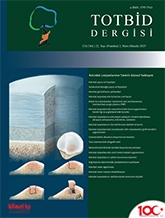
Whether it is acute injury after trauma or degeneration of articular cartilage due to aging changes, cartilage injury significantly affects the daily life of the affected people in the medium and long term. Unfortunately, no treatment method has yet been found to restore the specific structure of the articular cartilage as the original. Cartilage formed by conventional methods has more or less fibrous cartilage properties and is not as durable as hyaline cartilage. Today, the important issues that need to be overcome in order to achieve longterm success in cartilage repair; the repair tissue should have the characteristics of hyaline cartilage and the new cartilage tissue been formed, have to be seamlessly integrated with the tissues around and on the ground of the damaged area. There are promising results in the creation of cartilage tissue close to hyaline cartilage through tissue engineering. For this purpose, the addition of cartilage cells or stem cells to the scaffolds produced from natural or synthetic materials, gives good results in the short and medium term. While the application of implants obtained by multiplying the cells obtained by biopsy from the patient and placing them on the scaffolds was two-stage, recently it has evolved into single-stage techniques with the use of stem cells obtained from very different sources (bone marrow, adipose tissue, embryo, etc.). In this review, the current stage of cartilage repair methods using cellular and acellular scaffolds is reviewed.